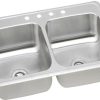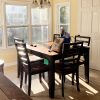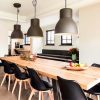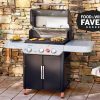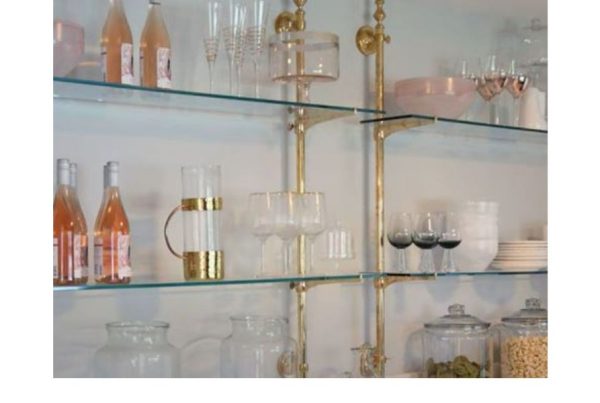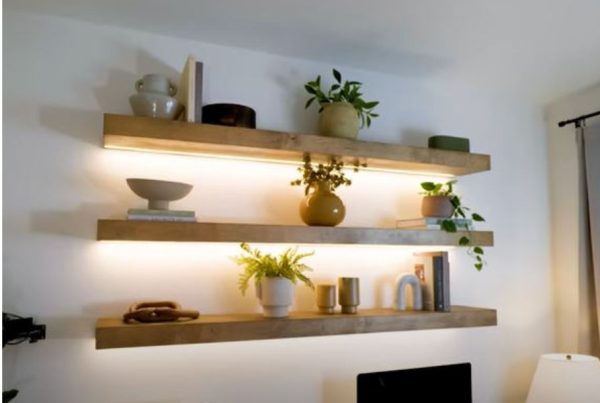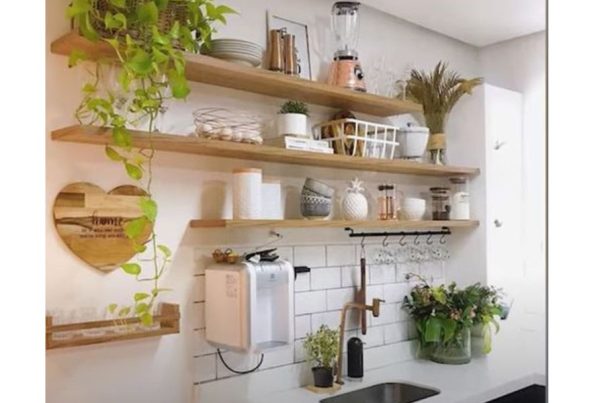

what are floating shelves made of
What are floating shelves made of, also known as wall-mounted or bracketless shelves, are unique storage solutions that appear “floating” on the wall without any visible brackets or support. They offer a minimalist and contemporary look, adding a touch of elegance to any room. What are floating shelves made of? Serving both decorative and functional purposes and can be installed in various areas of the home, including living rooms, kitchens, bedrooms, and offices.
Common Materials Used for Floating Shelves
Shelves are crafted using various materials, each with distinct characteristics and aesthetic appeal.
What floating shelves are made of depends on the intended use, desired style, and budget. Let’s explore some of the most common materials used in the construction of shelves:
Solid Wood Floating Shelves
Solid wood, which floating shelves are made of, is prized for its natural beauty and durability. They are crafted from a single piece of high-quality wood, such as oak, walnut, or cherry. These shelves exude warmth and bring a touch of nature indoors. Solid wood shelves are known for their sturdiness and ability to hold heavy items. They can be stained or finished to enhance their appearance and protect them from wear and tear.
 Plywood, what are floating shelves made of
Plywood, what are floating shelves made of
This engineered wood product offers excellent stability and resistance to warping or splitting. What floating shelves are made of are relatively affordable and available in various finishes, allowing customization to suit different interior styles. They are lightweight yet robust, making them a practical choice for residential and commercial settings.
MDF, what are floating shelves made of
Medium-density fiberboard (MDF) is a wood fiber and resin composite material. MDF floating is highly versatile and cost-effective. While MDF shelves may not be as durable as solid wood or plywood, they are suitable for lighter items and can add a contemporary touch to any space.
Glass shelves offer a modern and sophisticated appearance. They create a sense of openness and allow light to pass, making them ideal for small or dark rooms.
Metal Floating Shelves
What floating shelves are made of is famous for contemporary and industrial-style interiors. They can be crafted, Certainly! Apologies for the interruption. Here’s the continuation of the article:
They were using materials like stainless steel, iron, or aluminum. what floating shelves are made of, perfect for showcasing modern decor or creating an industrial aesthetic. They are sturdy and can support heavier items, making them suitable for kitchen utensils, books, or electronic devices.
Acrylic Floating Shelves
Acrylic shelves provide a contemporary and translucent look. They are lightweight, shatterproof, and easy to clean, making them a practical choice for areas with high humidity, such as bathrooms or what are floating shelves made of. Acrylic shelves often display decorative items, cosmetics, or even small plants, bringing a modern touch to any setting.
Conclusion
Floating shelves are an excellent addition to any interior space, offering functionality and aesthetic appeal.
What are floating shelves made of diverse, each with unique characteristics and advantages? Whether you prefer the natural warmth of solid wood, the affordability of plywood and MDF, the elegance of glass, the modern look of metal, or the contemporary appeal of acrylic, there is a material option that suits your style, needs, and budget.
Consider the intended use, durability, and overall design concept when selecting the material for your shelves, and enjoy the versatility and beauty they bring to your home.
FAQs
Q1. Can I install floating shelves myself?
Absolutely! Most floating shelf kits come with detailed instructions and all the necessary hardware for installation. Follow instructions carefully and use the appropriate tools for a secure and stable structure.
Q2. Are floating shelves sturdy enough to hold heavy items?
Yes, they can be. Solid wood and metal floating shelves are exceptionally sturdy and can support heavier items like books, dishes, or electronic equipment. It’s essential to follow the weight capacity guidelines provided by the manufacturer and ensure proper installation to maintain the shelves’ stability.
Q3. Can I customize the size of the floating shelves?
In many cases, yes. What are floating shelves made of? Offer customization options, allowing you to specify the desired dimensions to fit your space.
Q4. How do I clean floating shelves made of glass or acrylic?
To clean glass or acrylic shelves:
- Use a soft, lint-free, or microfiber cloth.
- Dampen the material with a mild glass cleaner, water mixture, and gentle dish soap.
- Gently wipe the shelves to remove any dust, fingerprints, or smudges.
- Avoid using abrasive cleaners or rough materials that could scratch or damage the surface.
Q5. Can I use floating shelves in a bathroom or other high-humidity areas?
Yes, you can. However, when installing shelves in high-humidity areas like bathrooms, consider using materials resistant to moisture, such as glass or acrylic. These materials are less prone to warping or damage caused by humidity. Additionally, ensure proper ventilation in the area to minimize moisture buildup.




 Plywood, what are floating shelves made of
Plywood, what are floating shelves made of